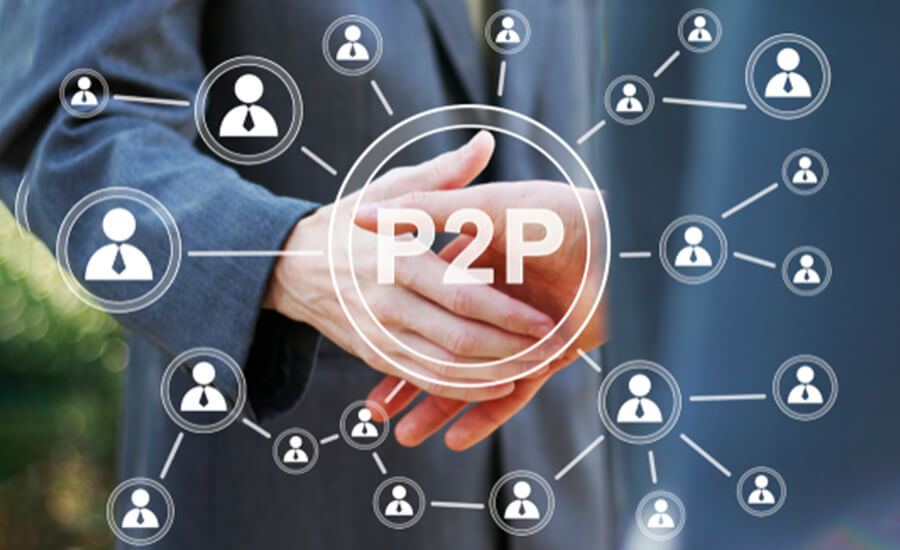In recent years, peer-to-peer (P2P) lending has emerged as a popular alternative to traditional lending institutions. It connects borrowers directly with individual investors, bypassing banks and financial institutions. This innovative lending model offers unique benefits for both borrowers and investors. In this blog post, we will provide an introduction to peer-to-peer lending, explaining how it works, its advantages and risks, and the key considerations for those looking to participate in this evolving financial landscape.
1. Understanding Peer-to-Peer Lending
Peer-to-peer lending, also known as social lending or marketplace lending, is a platform that connects individuals or businesses seeking loans with investors willing to lend money. It operates through online platforms that facilitate the loan transactions, handle the loan application process, and provide a marketplace for borrowers and investors to connect.
2. How Peer-to-Peer Lending Works
Loan Application: Borrowers submit loan applications through the P2P lending platform, providing information about their financial situation, credit history, and the purpose of the loan.
Loan Evaluation: The P2P platform evaluates the borrower’s creditworthiness, typically using credit checks, income verification, and other relevant criteria. This evaluation helps determine the borrower’s risk profile and the interest rate they may be offered.
Investor Selection: Investors review available loan listings on the platform and select the loans they want to fund based on the borrower’s information, loan amount, interest rate, and risk profile.
Funding and Loan Disbursement: Once the loan is fully funded by multiple investors, the funds are disbursed to the borrower. In some cases, the P2P platform may bundle the loans and sell them as securities to investors.
Loan Repayment: Borrowers make regular loan payments, typically on a monthly basis, which include both principal and interest. The P2P platform manages the collection of loan payments from borrowers and distributes the repayments to the investors.
3. Advantages of Peer-to-Peer Lending
Accessibility: P2P lending provides access to credit for individuals and small businesses who may have difficulty obtaining loans from traditional financial institutions due to limited credit history or other factors.
Competitive Interest Rates: Peer-to-peer lending often offers competitive interest rates, especially for borrowers with good credit profiles. This can provide an alternative to high-cost credit cards or payday loans.
Diversification for Investors: P2P lending allows investors to diversify their portfolios by investing in multiple loans with varying risk profiles. Investors can select loans based on their risk tolerance and desired returns.
Streamlined Application Process: Borrowers can often complete the loan application process online, making it convenient and efficient compared to traditional loan applications.

4. Risks and Considerations
Default Risk: Just like with any type of lending, there is a risk of borrowers defaulting on their loans. P2P platforms may employ various measures, such as credit checks and risk assessment models, to mitigate this risk, but it is still a possibility.
Lack of Regulation: Peer-to-peer lending is relatively new and less regulated than traditional lending institutions. It is important for borrowers and investors to thoroughly research and choose reputable P2P platforms that adhere to industry best practices.
Platform Risk: The success and viability of the P2P platform itself are crucial. If the platform experiences financial difficulties or shuts down, it could impact both borrowers and investors.
Limited Investor Protections: Unlike traditional financial institutions, P2P lending does not offer the same level of investor protection or deposit insurance. Investors should carefully assess the platform’s risk management practices and consider diversification to minimize potential losses.
Peer-to-peer lending has revolutionized the lending landscape by providing an alternative to traditional banks and financial institutions. It offers accessible credit options for borrowers and diversified investment opportunities for investors. However, it’s important to understand the risks involved and choose reputable platforms that prioritize borrower screening, risk assessment, and investor protection. Peer-to-peer lending has the potential to reshape the lending industry, providing a more inclusive and efficient system for borrowers and investors alike.

















